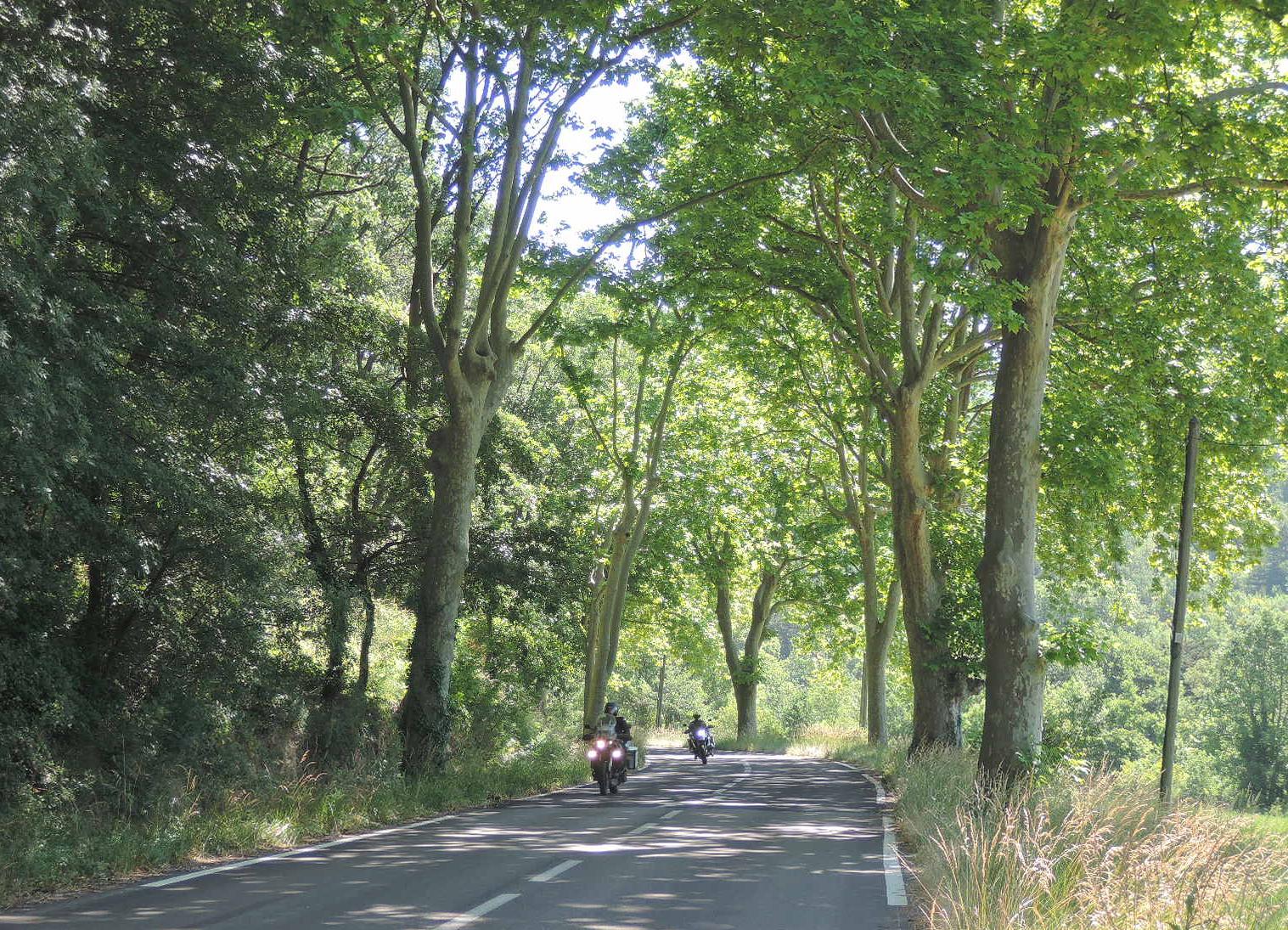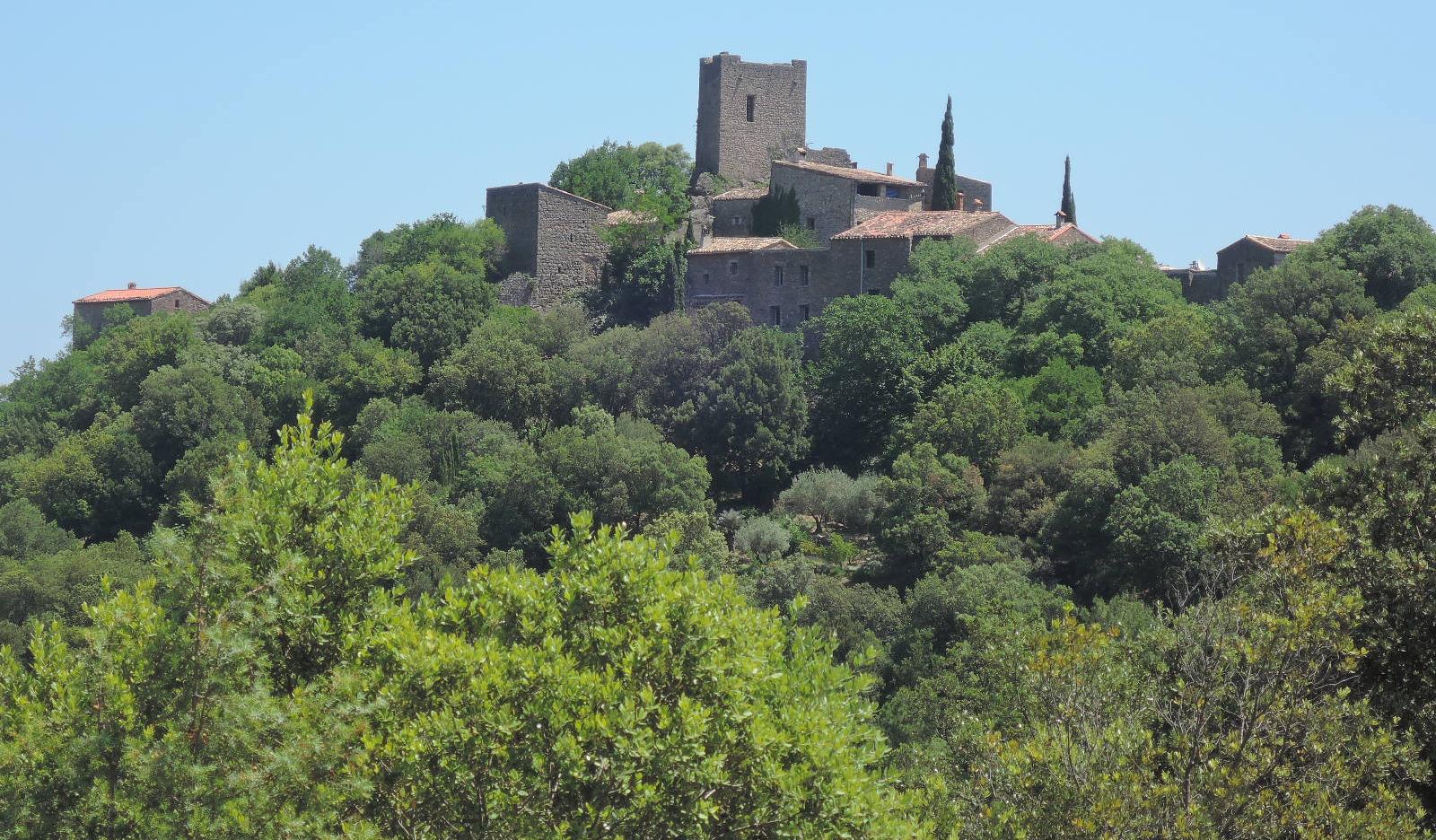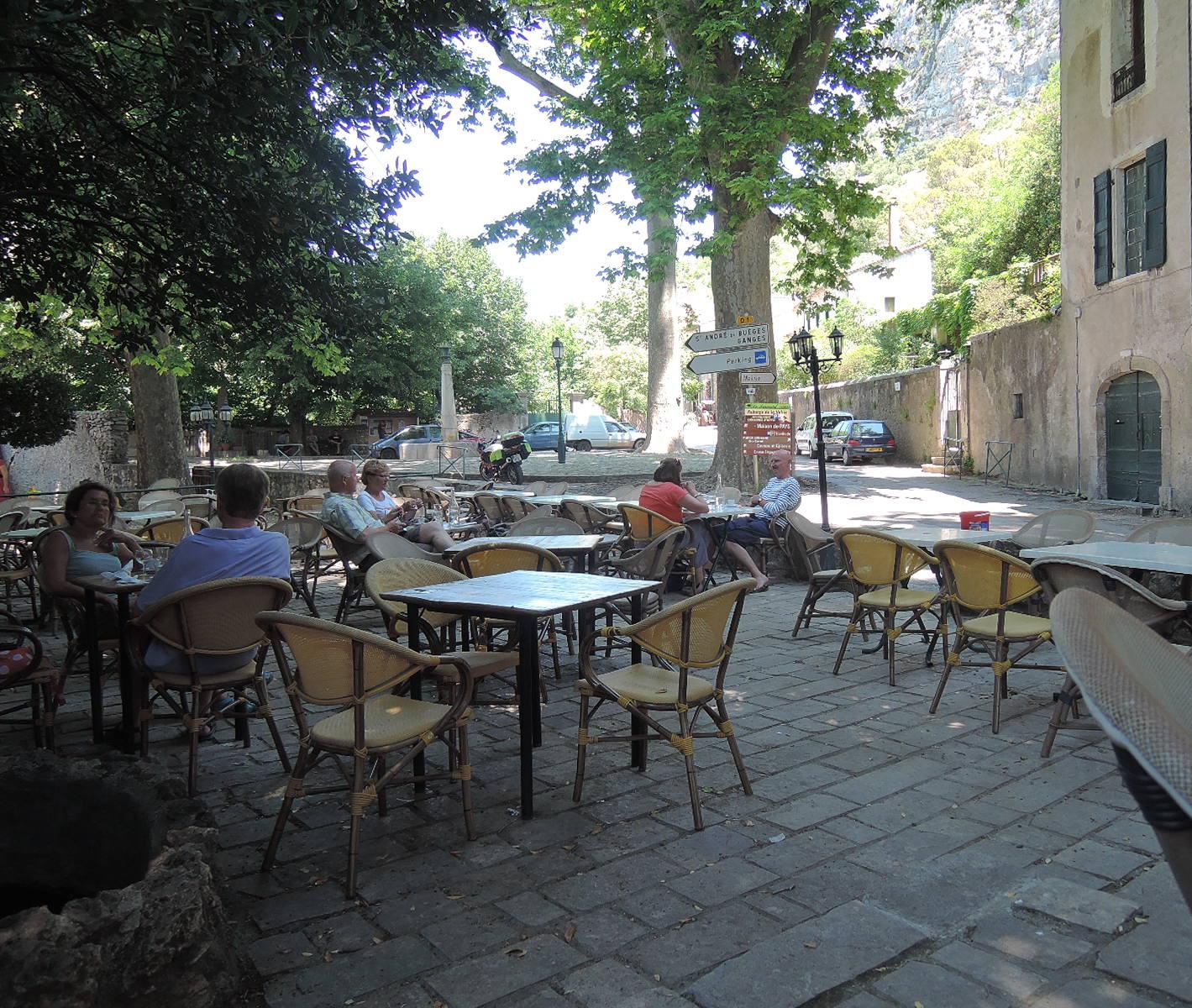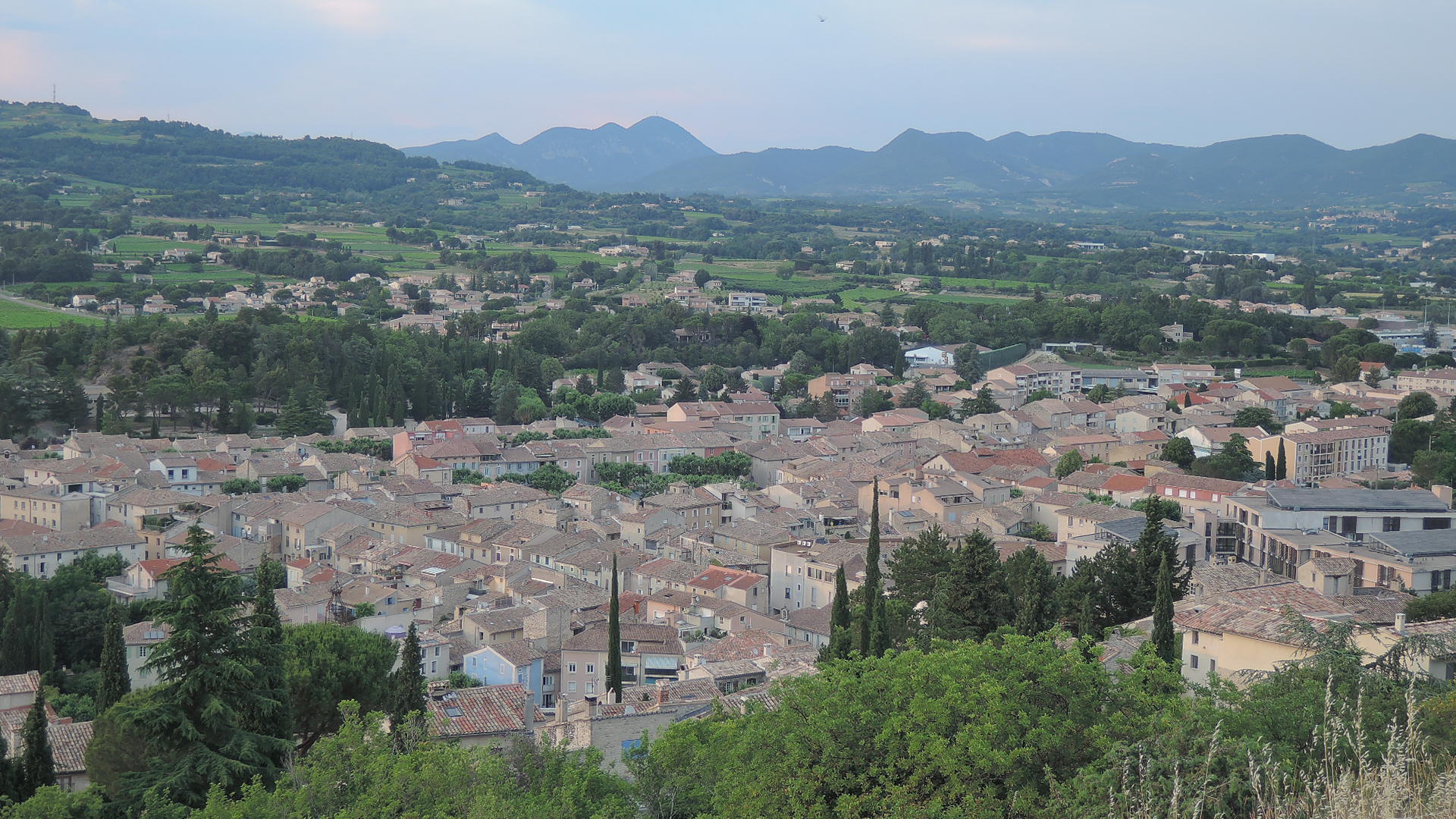Let me say in advance that this “lost” is a figure of speech, mainly to make the title look more attractive; a bait, so to say. Yet some of it is true.
As I was saying in the previous chapter, the inland Languedoc is a sparsely populated area, and along my second day crossing it I had the chance of learning to what point it can get wild; almost as much as one of the most isolated and lost regions of Extremadura, my homeland: a large expanse of thick bush through which but a narrow road goes, not even deserving that name, but rather a track -only with a layer of asphalt- whose width barely allows the passage of a car. More on this later.
It’s funny how, as days go by -and most of all the miles- one feels more and more comfortable on the motorcycle, becoming part of it, as if an only body, like a modern centaur. You get used to its sounds, vibrations, the touch of the handlebar and the shape of the saddle, to its capabilities and limitations, its evil ways and tricks also. Besides, you don’t get so tired now, as you get used to the riding position -though of course your muscles will pass you the bill in the end. True, same happens with a car; but perhaps with a bike is more noticeable, being the union more intimate. Not only -I guess- because the mass ratio between rider and mount is closer to the unit, but maybe also because, demanding the ride a higher concentration on the part of the pilot, you become more and quicker familiar with the machine on which your safety relies.
If I had to repeat today the route I did then, village by village, I’d very likely won’t succeed; not only because there are twenty possible route combinations from Lodève to Vaison-la-Romaine on secondary roads, but also because that morning I got lost: I did a mistake at a junction and I had to later rectify the course, which is why I ended up in the asphalted track that I’ve already mentioned.
Little after leaving Lodève the road was flanked by trees, like many roads in France. Not short stretches, as you can find every now and then in Spain, but often the whole way between two or three villages is planted with trees on both sides, which makes for a very pleasant drive and, in such hot day as that, also a more bearable, because the leaves cool down the air and the shade prevents the asphalt from melting down.
But soon afterwards I took a detour and I got into a different kind of thicket, isolated from any traffic and almost from any human presence. First the road climbed for a while, maybe one or two hundred metres; then I crossed some vineyards planted in a high plateau,
then the vegetation changed and I got into one of the thickest and wildest bushwoods I’ve ever seen: wherever I looked at there was nothing but low trees and scrub, so tight one can’t even see the ground, covering valleys and hills to the horizon; a narrow road, neglected and full of gravel, on which the grass started to grow and along which I didn’t come across a single vehicle. More than once I stopped the engine, halted and listened, but not a sound could be heard except some bird’s song and the cicadas. Often I had to check my GPS to make sure that the track lead somewhere.
Finally, after more than one hour on that road and getting my forearms stiff as if I had been working with a jackhammer, on top of a little hill in the middle of nowhere there appeared the tiny village of Arborás; which, far from being half deserted and partly ruined, as would have happened in Spain, being such an isolated environment, was quite neat and very well taken care of; one more evidence of how much the French love their countryside and villages.
Little after Arborás the track joined a wider road, running slowly down a valley; and as soon as I got a chance I took a break for drinking a cold and well deserved beer. This was in Saint-Jean-de-Buèges, on a pleasant terrace shaded by a giant tree; one of those charming places you find by the thousands in France.
I’d willfully have stayed overnight in this village, because after having crossed the wilderness I had had my share of motorcycle and mileage that day, but there was no lodgings and, besides, it was too early yet. So, I rode on.
It was the hottest day since I started this journey, and in the afternoon, when passing through Alès (another town full of moors), as I saw a few children taking a bath by a small beach on the river shore, I parked the bike in a nearby street and, grabbing my towel and flipflops, I also took a refreshing and vivifying plunge; I even swam a bit, as the river was wide and flowed quietly.
Despite this bath, fifteen minutes later I was sweating again.
Apart from hot, it was a long riding day as well: along the stretch of lowlands between Alès and Vaison-la-Romaine, the Rhône’s plain, there aren’t many of such places as I like for sleeping; it’s too rich and populated a region, a settled wine producing area and a bit industrial too, as one can easily guess just by looking at the map: towns are big and they’re close to each other, the road network is dense, with several main highways, and it hosts two relatively big cities: Avignon and Montelimar. So, it was already twilight when I found a place suiting my senses and preferences: Vaison-la-Romaine.
This locality has two parts: the low town, larger and more modern, and the high village, which is the old borough, up on the ridge, obviously smaller than the low town (as it can’t grow). A dream of a village it is, with three or four parallel streets running along the hillside, connected by very narrow alleys; all neatly preserved, with houses beautiful like small palaces, romantic yards and gardens, stone arches, fountains and little squares; and with two castles: one on the very top and the other -rather a fortress house- on the slope’s west side, refurbished as a hotel, which is where I lodged.
This village and the room I got were well worth having ridden longer. Actually it wasn’t a room what I got, but a small appartment, a top-notch duplex, stone spiral staircase and all; the same lodgings where five centuries ago probably their owners lived, though quite a different kind of life. I wonder how was it? I bet they didn’t have a minibar in the room, but also they wouldn’t know what to do with it. Pity that I was in low spirits that evening (not every day is fun in a traveler’s life, I’ve already said) and I almost couldn’t enjoy all that. In other times I’d have jumped and shouted with joy.
There was also a small pool in the hotel, where I took my second bath that day, after which I fall asleep for a moment while getting dry in the only spot the last rays of the setting sun reached.
My dinner? At a restaurant in the high in a terrace, one of the finest nooks in town, all stones around, plants and nice views, quiet, served by a poofter bartender, nice as only poofters can be. I gifted myself with an icecream for a dessert, for cheering myself up, but it didn’t work, because my conscience complained. Conscience! What’s the use of it?






